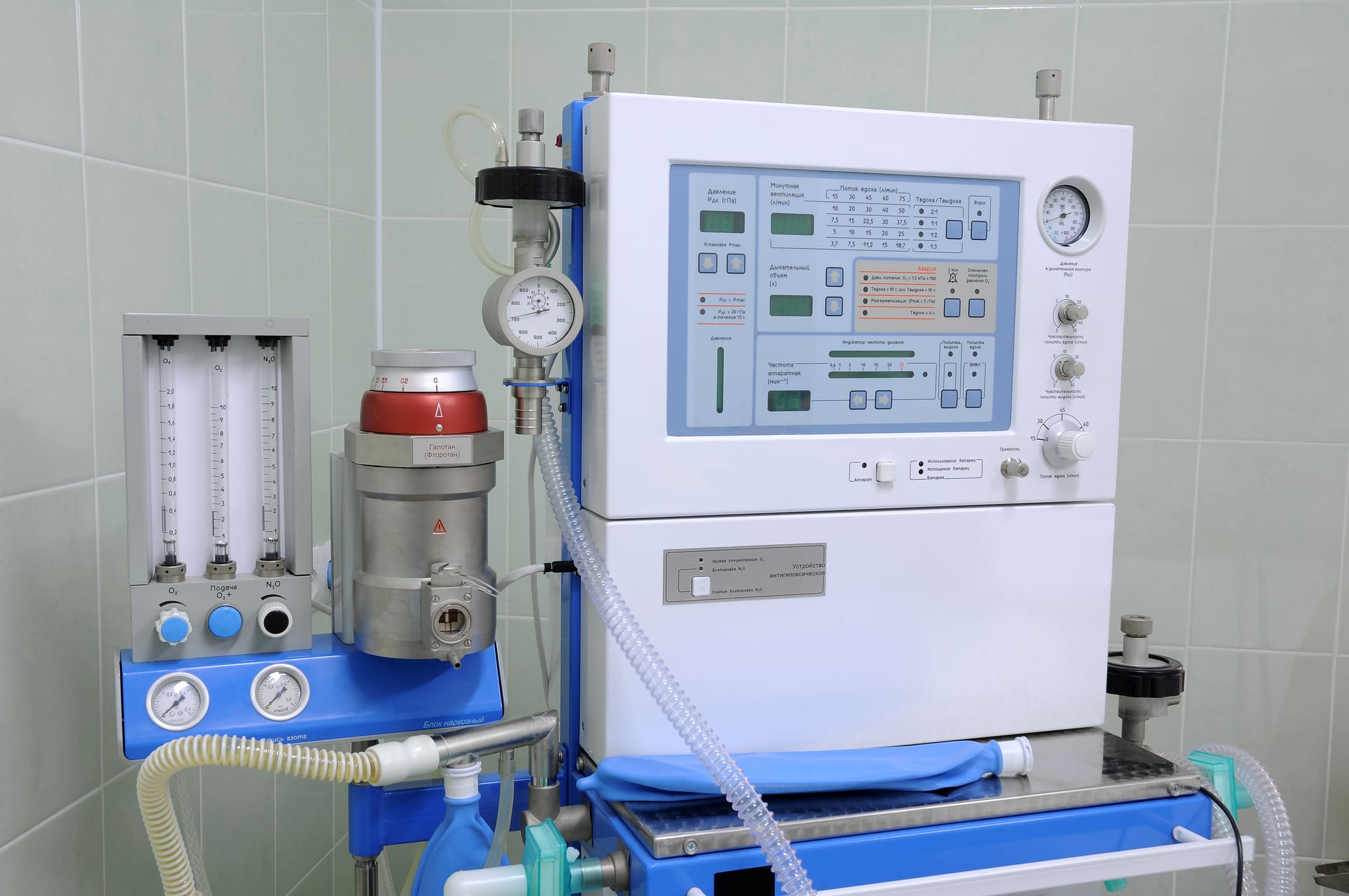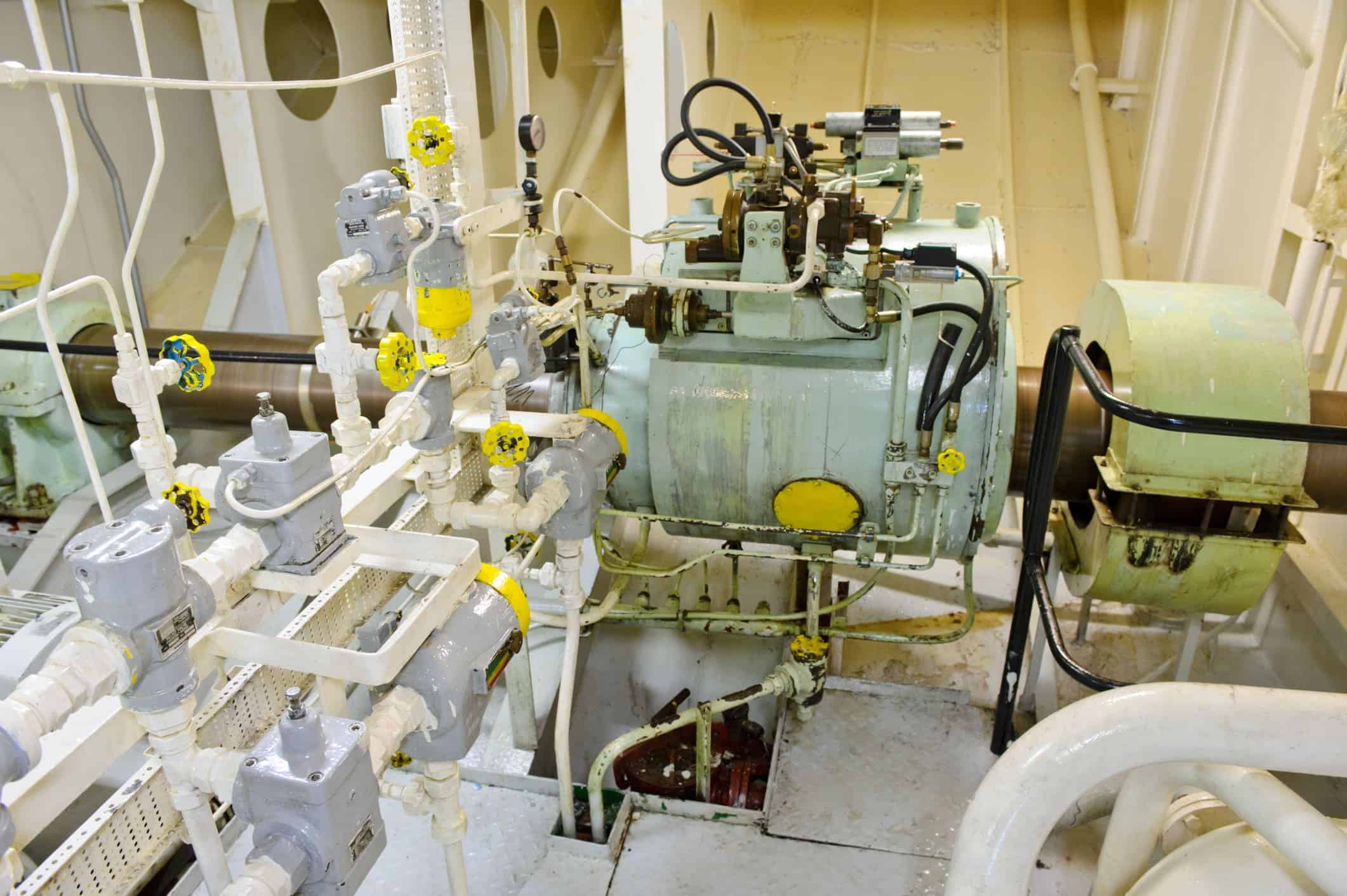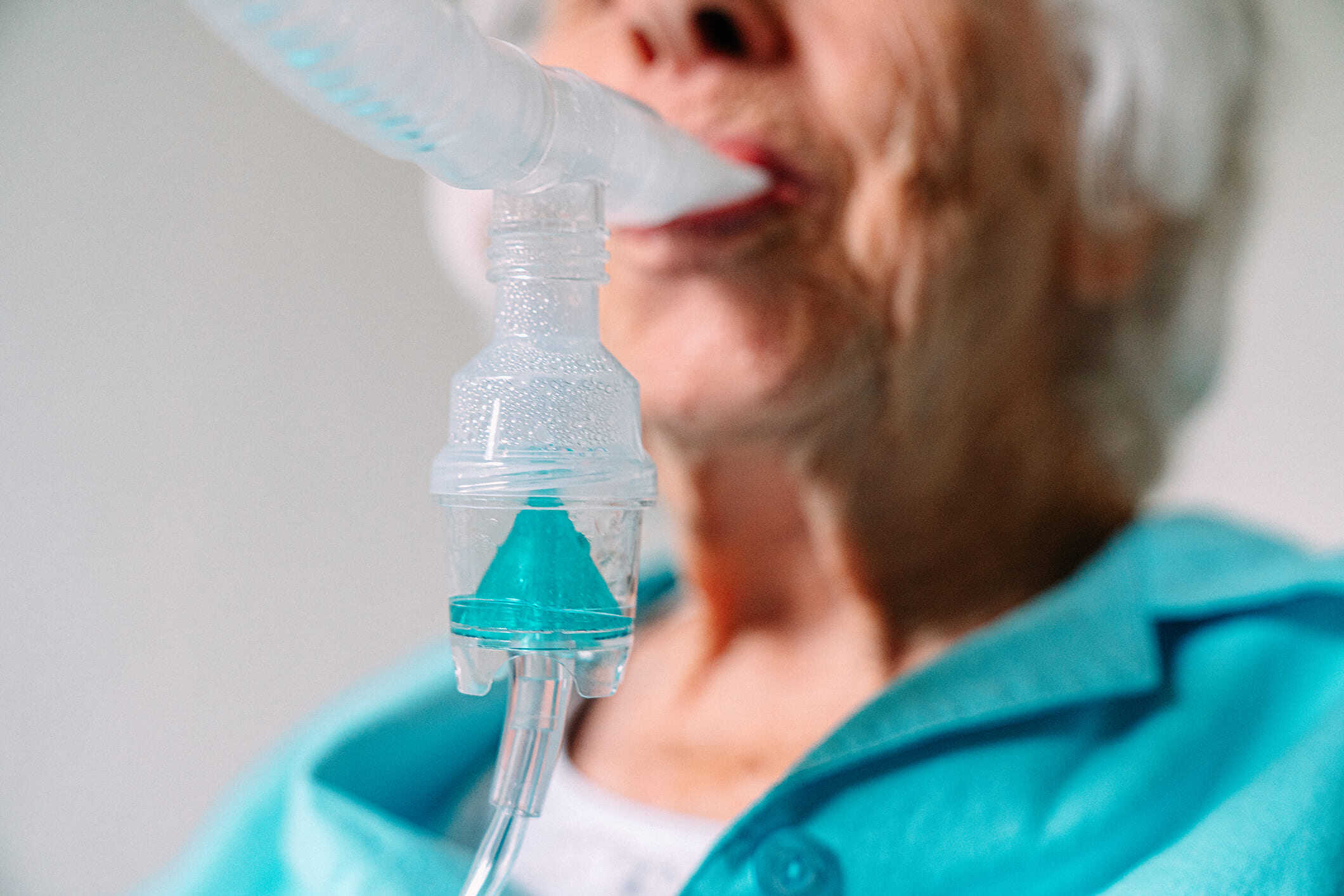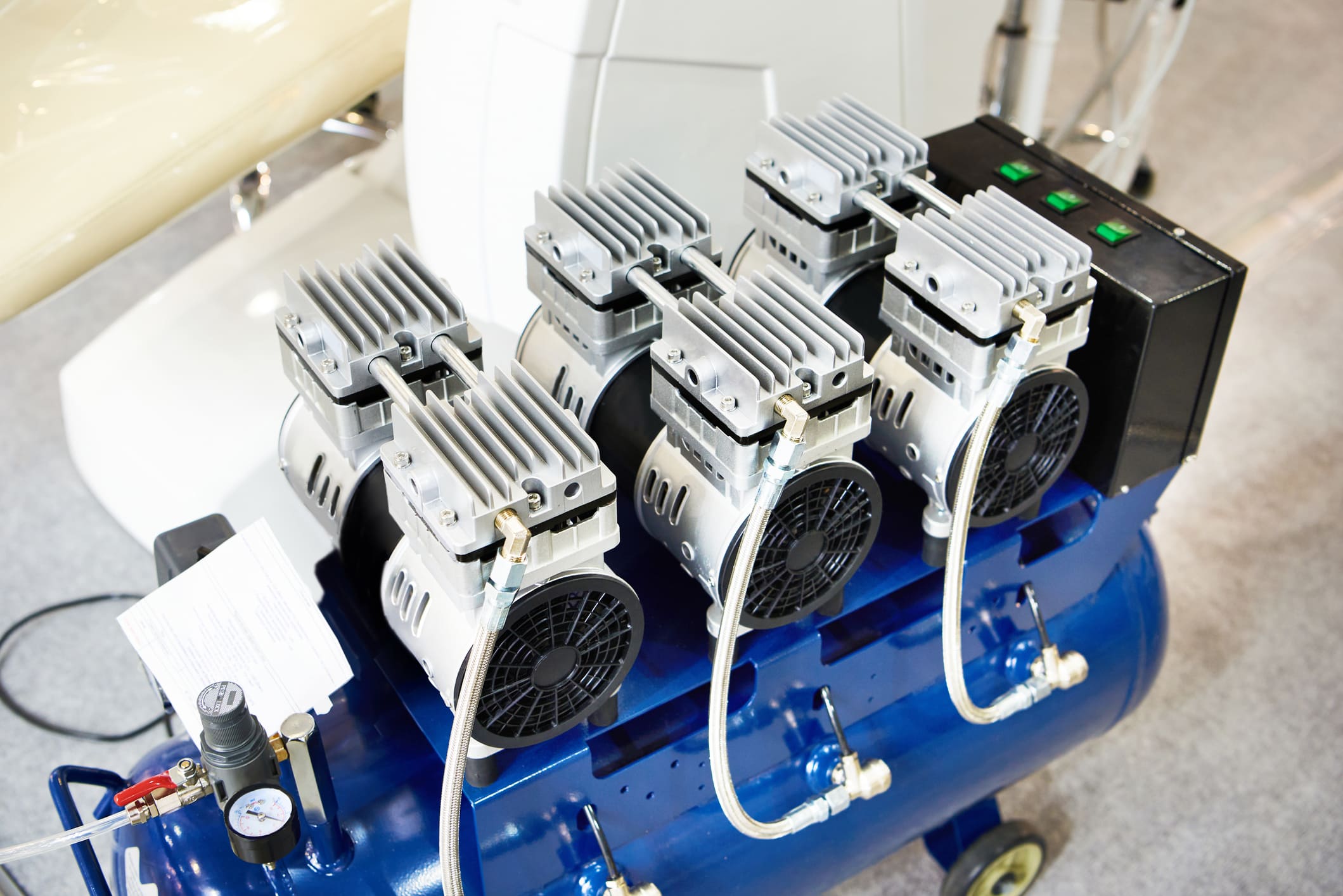BLOG

Critical Role of Air Compressors in Medical Equipment: A Comprehensive Guide
Air compressors in medical equipment are the unseen backbone of modern healthcare facilities. These essential machines provide a clean, reliable, and continuous supply of compressed air that is vital for numerous life-saving devices. Medical air compressors are critical in ensuring patient safety and efficient medical procedures, from ventilators and anaesthesia machines to surgical tools and pneumatic tube systems.
In this comprehensive guide, we'll delve deeper into the world of air compressors in medical equipment. We'll explore the various types of medical equipment they power, the importance of maintaining clean and dry compressed air, and the regulatory standards that ensure patient safety. We'll also discuss the role of air compressors in ventilation systems, surgical tools, and even medication delivery. Finally, we'll touch on best practices for maintaining these essential air compressors in medical equipment and the exciting advancements shaping their future.
Types of Medical Equipment Powered by Air Compressors
Air compressors in medical equipment are truly the silent partners of healthcare facilities. Their reach extends far and wide, ensuring the smooth operation of various critical devices. Here's a glimpse into some of the essential equipment they power:
Life-Saving Respiration:
Ventilators: For patients struggling to breathe on their own, ventilators provide life-saving support. These machines rely on medical air compressors to deliver a precise mixture of air and oxygen directly to the lungs, ensuring proper ventilation and gas exchange.
Precision Anesthesia Delivery:
Anesthesia Machines: During surgery, anaesthesia machine air supply is critical for maintaining a controlled state of unconsciousness in patients. Medical air compressors ensure a consistent flow of medical gases mixed with precise amounts of oxygen, allowing anesthesiologists to deliver safe and effective anaesthesia.
Surgical Efficiency and Control:
Surgical Tools: Imagine a surgery without the hum of air compressors in medical equipment. These machines power a variety of surgical tools, including:
- Pneumatic Drills: These versatile tools help surgeons make precise cuts and access areas during procedures.
- Saws: From bone saws to oscillating saws, air compressors provide the power needed for controlled bone and tissue cutting.
- Suction Devices: Maintaining a clear surgical field is crucial. Suction devices powered by medical air compressors remove blood, fluids, and debris during surgery.
- Cautery Units: These specialised tools use electrical current to generate heat for controlled tissue cutting and sealing, often relying on air compressors for internal cooling or smoke evacuation.
Importance of Clean and Dry Compressed Air
Maintaining clean compressed air in any healthcare setting is paramount. It's the very foundation for safe and effective medical procedures. Contaminants like oil, moisture, and bacteria can pose serious health risks to patients and compromise the performance of sensitive medical equipment.
Here's why clean compressed air is so crucial:
- Patient Safety: Oil and other contaminants can irritate lungs and potentially cause serious infections, especially for patients with compromised respiratory systems relying on ventilators. Clean compressed air ensures the air delivered is safe and free from harmful particles.
- Equipment Performance: Moisture in compressed air can lead to corrosion and malfunction of delicate medical equipment. Dry compressed air protects these vital devices, ensuring their reliability and extending their lifespan.
- Regulatory Compliance: Medical air compressor standards in Australia are established by various bodies, including the Therapeutic Goods Administration (TGA) and relevant state health departments. These regulations align with international standards set by the ISO (International Organisation for Standardisation) and adhere to strict requirements for air quality regulations in healthcare settings. These regulations specify acceptable levels of contaminants like oil, moisture, and microbial growth. Regular maintenance and filtration systems ensure medical air compressors comply with these vital standards.

Medical air compressors are specifically designed to address these concerns. They are equipped with sophisticated filtration systems that remove contaminants like oil and bacteria. Additionally, dryers are employed to eliminate moisture from the compressed air, preventing corrosion and ensuring a clean, dry supply for critical medical applications.
Air Quality Standards and Regulatory Compliance
In Australian healthcare, the quality of compressed air used in medical applications is meticulously controlled by various regulatory bodies. These regulations, known as medical air compressor standards in Australia, safeguard both patients and medical equipment by dictating acceptable levels of contaminants.
Here's a breakdown of the key regulatory players:
- Therapeutic Goods Administration (TGA): The TGA is the Australian government agency responsible for regulating therapeutic goods, including medical devices and air compressors used in healthcare settings. They ensure these devices meet strict safety and performance standards.
- Australian Standards (AS): Developed by Standards Australia, these national standards provide detailed guidelines for various aspects of medical air systems, including installation, operation, and maintenance. Following these standards helps healthcare facilities achieve optimal performance and compliance.
- ISO Standards (International Organisation for Standardisation): While not directly legislated, ISO standards, like ISO 8573-1 (Air quality - Compressed air for breathing use), offer internationally recognised benchmarks for compressed air quality. These standards are often referenced by the TGA and local health departments.

The Focus: Contaminant Control and Air Quality
Medical air compressor standards in Australia strictly regulate acceptable levels of contaminants in compressed air, including:
- Particulates: Dust, dirt, and other airborne particles can irritate lungs and compromise equipment performance. Air filtration systems are crucial for removing these contaminants.
- Moisture: Moisture in compressed air can lead to corrosion and malfunction of medical equipment. Medical air compressors typically employ dryers to eliminate moisture and ensure a dry supply.
- Microbial Contamination: Bacteria and other microorganisms pose a serious health risk, especially for immunocompromised patients. Strict regulations and regular maintenance of filtration systems are essential to minimise microbial growth in compressed air.
Maintaining Compliance: A Collaborative Effort
Regular maintenance and filtration are essential for medical air compressors to comply with hospital air quality regulations. Healthcare facilities play a vital role in ensuring proper maintenance schedules are followed and filtration systems are replaced at recommended intervals. Additionally, consulting with qualified technicians specialising in medical air compressors can help facilities stay up-to-date with the latest regulations and ensure their compressed air systems meet the highest quality standards.
Role of Air Compressors in Ventilation Systems
Maintaining fresh, clean air is crucial in Australian healthcare facilities for patient comfort, infection control, and optimal working conditions for medical staff. Medical air compressors power the ventilation systems that deliver breathable air throughout critical areas like ICUs, operating rooms, and respiratory therapy departments. This helps ensure proper ventilation and gas exchange for critically ill patients, minimises the risk of airborne contaminants during surgery, and provides a controlled environment for respiratory therapies.
Air Compressor Applications in Anesthesia Machines
Anaesthesia machines are crucial during surgery to ensure patient safety and comfort. They deliver a precise mixture of anaesthetic gases such as sevoflurane or desflurane, along with oxygen, to keep patients unconscious and pain-free. Medical air compressors play a vital role in this process, providing the essential pressure and flow rates required for efficient gas delivery. The air compressor ensures consistent pressure for controlled delivery, which is crucial for maintaining adequate anaesthesia depth and patient safety.
Additionally, the precise flow rate provided by the compressor helps ensure proper gas exchange and prevents complications like hypoxia or hypercapnia. In some cases, anaesthesia machines incorporate ventilation functionalities, with the medical air compressor providing the compressed air required to deliver oxygen or oxygen-enriched air mixtures to the patient's lungs, supporting their breathing during surgery.

Powering Surgical Tools and Equipment
Medical air compressors play a crucial role in powering surgical tools and equipment in operating rooms. Pneumatic drills and saws, suction devices, and cautery units are some examples of tools that rely on medical air compressors. These tools help surgeons make precise cuts, maintain a clear surgical field, and control tissue cutting and sealing. The consistent pressure provided by medical air compressors ensures efficient cooling and minimises smoke build-up, improving visibility during surgery.
Dental Applications of Air Compressors
Dental clinic air compressors provide the compressed air that powers a variety of equipment used during dental procedures. This includes dental chairs, which utilise compressed air to adjust patient positioning for optimal access and comfort, and handpieces, which come in various forms, each powered by compressed air for efficient cutting action. Air-water syringes combine a stream of compressed air and water for a clear view of the treatment area, while suction systems powered by air compressors remove saliva, blood, and other fluids for a clean and dry working environment and patient comfort.
Pneumatic Tube Systems for Medication Delivery
Medical air compressors don't just power surgical tools; they also serve as the driving force behind a vital behind-the-scenes system in hospitals: pneumatic tube systems. These rapid delivery systems utilise compressed air to propel carriers through a network of tubes, enabling the swift and secure transport of:
Medications:
Timely delivery of medications is crucial in many situations. Pneumatic tube systems can deliver medications, including emergency medications, blood products, and IV fluids, between pharmacy departments, nursing stations, and operating rooms within minutes, significantly improving response times and patient care efficiency.
Lab Samples:
Fast and reliable transportation of lab samples, like blood draws or tissue biopsies, is essential for timely diagnosis and treatment decisions. Pneumatic tube systems ensure these samples reach laboratories quickly and safely, minimising delays in test results.
Documents
While seemingly mundane, the rapid and secure delivery of medical records, pathology reports, and other documents between departments can significantly impact patient care coordination and overall workflow efficiency.
Maintenance Practices for Medical Air Compressors
Just like any critical medical equipment, medical air compressors require regular maintenance to ensure optimal performance, compliance with air quality standards, and the continued delivery of clean, dry air. Here are some key maintenance practices:
Routine Inspections:
Regular inspections by qualified technicians, following manufacturer recommendations and relevant Australian standards like AS 1715:2010 (series), help identify potential issues early on and prevent costly breakdowns.
Filter Changes:
Air filters play a vital role in removing contaminants from compressed air. Regular filter changes, adhering to the manufacturer's recommended schedule, ensure clean air and protect sensitive medical equipment from damage caused by particulates or moisture.
Moisture Control:
Moisture in compressed air can lead to corrosion and equipment malfunction. Medical air compressors typically utilise dryers to eliminate moisture. Regular maintenance of these dryers is essential for optimal moisture control and maintaining air quality regulations.
Lubrication:
Fast and reliable transportation of lab samples, like blood draws or tissue biopsies, is essential for timely diagnosis and treatment decisions. Pneumatic tube systems ensure these samples reach laboratories quickly and safely, minimising delays in test results.

Importance of Backup Systems and Redundancy
In a healthcare setting, a continuous supply of clean, compressed air is critical. That's why backup air compressor systems are essential. These systems act as a safety net, ensuring an uninterrupted supply of air during unforeseen events:
- Emergencies: Sudden equipment failures can disrupt critical procedures in the OR or ICU. Having a backup medical air compressor ensures a continuous supply of compressed air for ventilators, anaesthesia machines, and other life-saving equipment.
- Maintenance Downtime: Regular maintenance is necessary for optimal performance. However, during these periods, the primary compressor will be offline. A backup air system bridges this gap, guaranteeing a continued supply of air for essential medical equipment.
- Disaster Preparedness: Natural disasters or power outages can disrupt the primary power supply, potentially impacting the functionality of the main compressor. Having a backup air system with an independent power source, like a diesel generator, ensures a reliable source of compressed air even in emergencies.
Ensuring Patient Safety and Efficiency: Key Considerations for Medical Air Compressor Management in Australian Healthcare
Medical air compressors play a critical role in delivering life-saving care in Australian healthcare facilities. This guide emphasises the importance of maintaining air quality standards, complying with regulations, implementing effective maintenance practices, prioritising backup systems, and empowering staff through training. Clean, dry air is vital for patient safety and optimal equipment performance. Meeting air quality regulations ensures the safety and effectiveness of compressed air used in medical settings.
Regular maintenance practices and investment in backup air compressor systems guarantee reliable and efficient operation during emergencies or maintenance downtime. Training healthcare professionals on the safe operation and maintenance of medical air compressors is also vital for optimal system performance and patient safety.
By prioritising these aspects, Australian healthcare facilities can ensure the smooth operation of these critical systems, ultimately safeguarding patient well-being and optimising the delivery of exceptional healthcare.
If you're seeking top-quality industrial air compressors tailored for the rigorous demands of the healthcare industry in Adelaide or across South Australia, Titan Air Compressors has you covered. Titan Air Compressors offers compressors that meet the exacting standards of medical facilities, ensuring reliability and efficiency essential for patient care. Trust in Titan Air Compressors to enhance your facility's critical systems. Explore our range today and get a free quote by visiting our website or calling 0451 499 733.

